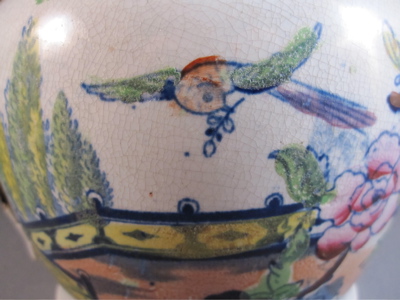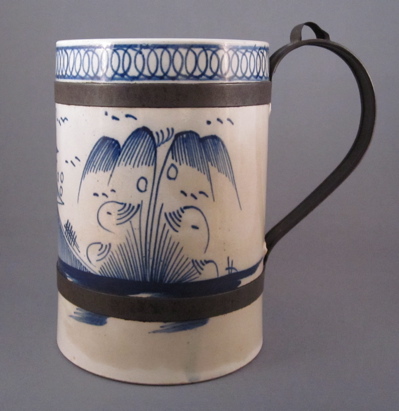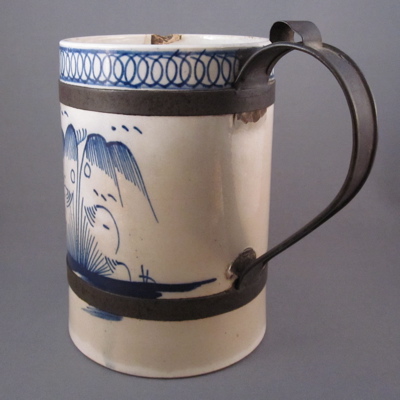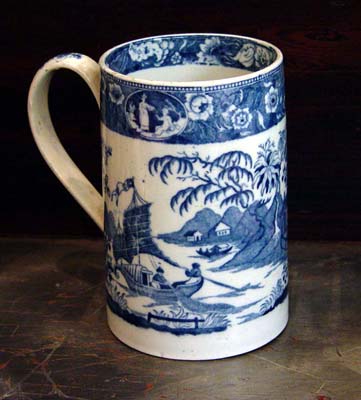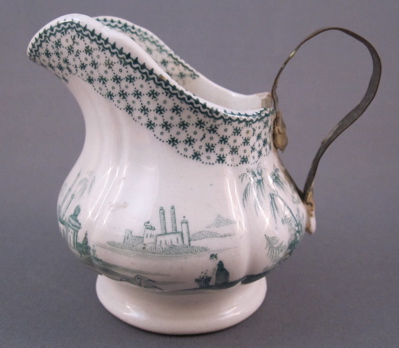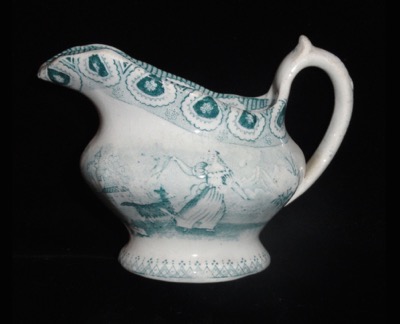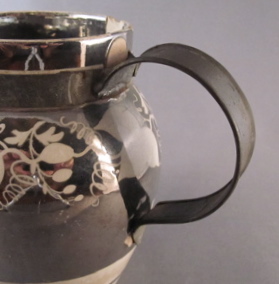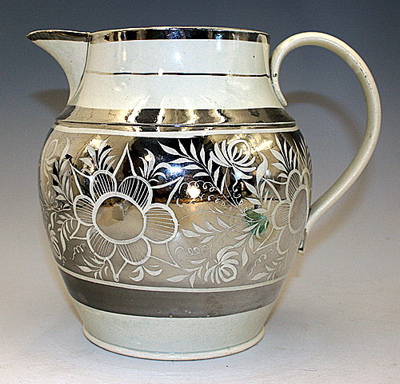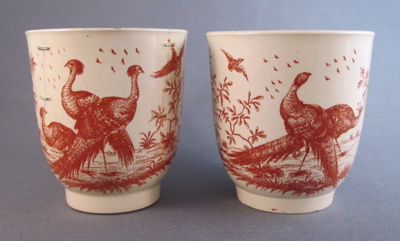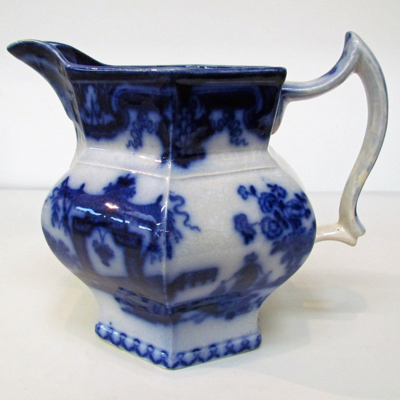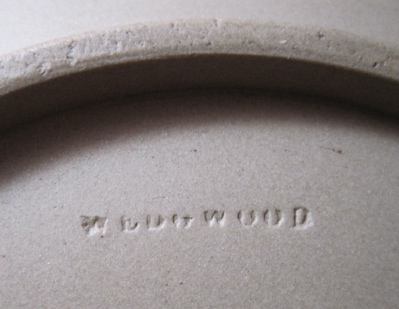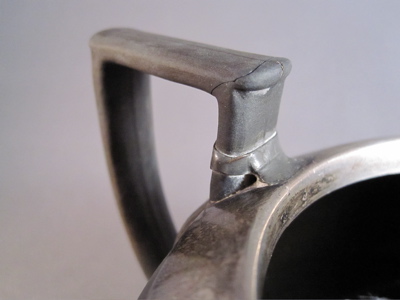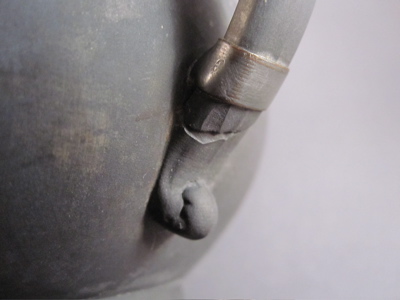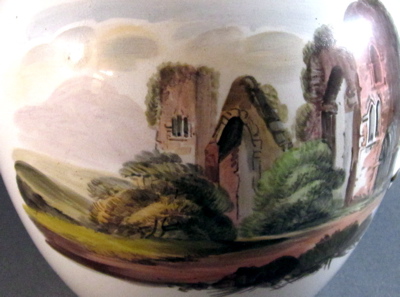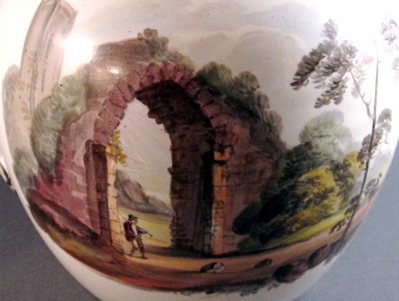“Filled-in transfer” is the term describing the of use of multicolor enamel washes over printed transfer decoration. This English “Dutch” shape jug was most likely made by Spode, founded by Josiah Spode in Stoke-on-Trent in 1767. His “Stone China” line, a new type of stoneware that gave the appearance of porcelain, was introduced in 1813 to great acclaim.
This oriental style of decoration copied the popular Chinese export porcelains of the 18th & 19th century.
Jug measures 5″ high by 7″ wide.
Cobalt blue transfer mark printed on the bottom includes the ubiquitous lion and unicorn.
Tin handle has rusted over the years but still functions as a practical replacement.
This jug with similar form and transfer decoration maintains its original handle.
Photo courtesy of Hudson Antiques



